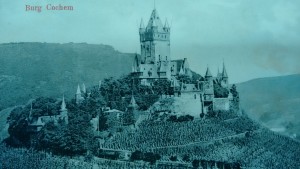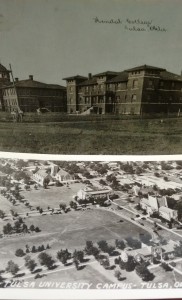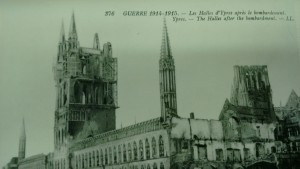When we think postcards, we think Holiday season. With the festive season around the corner, it may be interesting to shift our attention to postcards in this entry of our weekly blog. As technology dominates our lives in this digital age, it is certainly refreshing to take a look into the history of postcards and how they contributed to the post facilities back in the day. Cards with messages had been sporadically created and posted by individuals since the beginning of postal services. The earliest known picture postcard was a hand-painted design on card, posted in Fulham in London to the writer Theodore Hook in 1840 bearing a penny black stamp. An interesting trivia about this is that he probably created and posted the card to himself as a practical joke on the postal service, since the image is a caricature of workers in the post office.
The first advertising card appeared in 1872 in Great Britain and the first German card appeared in 1874. Cards showing images increased in number during the 1880s. Images of the newly built Eiffel Tower in 1889 and 1890 gave impetus to the postcard, leading to the so-called “golden age” of the picture postcard in years following the mid-1890s. Stamp collectors distinguish between postcards (which require a stamp) and postal cards (which have the postage pre-printed on them). While a postcard is usually printed by a private company, individual or organization, a postal card is issued by the relevant postal authority. The study and collecting of postcards is termed deltiology.

Front: Burg Cochem, Germany Rear: Cpl Rowe to Alton C. Rowe, Sr [2009.018.4]
Rear: Cpl Rowe to Alton C. Rowe, Sr [2009.018.4]
And then, there is Les Ruines Apre le Passage des Allemands photo-postcards [2001.072] – an 18-page commemorative album of photo-postcards depicting scenes in France during 1914-1915. Special Collections also has a postcard collection [1976-023] that Consists of postcards collected from a variety of individuals including Lilah Lindsey, John W. Shleppey, and Richard Tenney grouped into 7 categories: United States, American Indians, People (identified and unidentified), Transportation (airplanes, trains, automobiles, ships), Art and Artifacts, Greeting Cards and Business Advertisements, Foreign Countries, and oversize material.
These postcards remain as historical artifacts. They indeed represent more than just the holiday season. They carry stories, emotions, and history along with them. The richness of study to be found in these cards will stimulate, delight and amaze you. All the collections are open to public on request.



